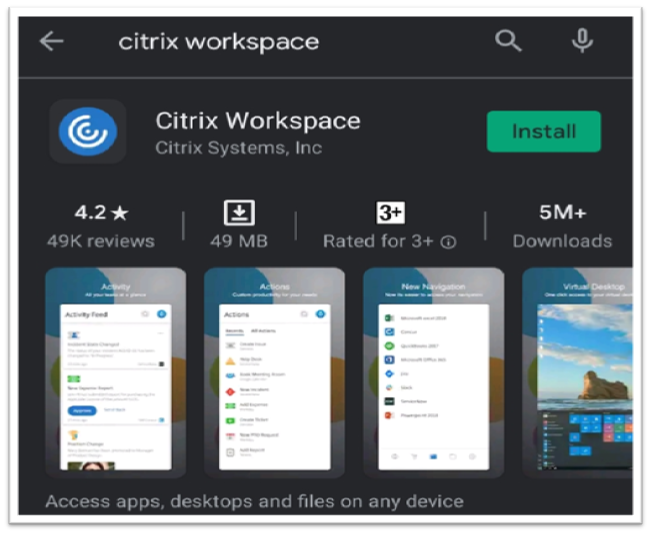

- #Android workspace manager update#
- #Android workspace manager android#
- #Android workspace manager free#
- #Android workspace manager windows#
However, it’s not just about onboarding users and giving them access to their resources efficiently. However, an issue for IT admins with this tech titan’s capabilities is the lack of enterprise-grade device management and IAM capabilities.ĭevice management is critical in modern IT organizations and has become a daily task for IT admins. There is no doubt that Google would like to establish itself as the primary backend service provider in IT organizations, especially when you factor in more recent additions to Google’s list of services like Google Cloud, Google Cloud IAM, and more. The two (Google and Microsoft) have been at war with their productivity suites, upping the ante with solutions such video conferencing (Meets), chat (Teams), and more. G Suite has been so successful that Microsoft had to create their own cloud-based productivity platform in 2011, called Office 365® (now Microsoft 365), just to keep up. They were effectively cloud alternatives to Microsoft solutions Word, Excel, and Powerpoint (respectively), which were on-prem applications at the time.Īs Google continued to develop the G Suite platform, IT administrators began to discover that Google services could replace the majority of longstanding Windows®-based IT solutions on-prem, such as Office®, Exchange®, SCCM® (formerly SMS), and even aspects of Active Directory to some extent.

For example, Docs, Sheets, and Slides were some of the first Google apps. G Suite was initially released in 2006 under the name Google Apps for Your Domain as a cloud-based alternative to the Microsoft suite of on-prem IT solutions. The solution is called JumpCloud Directory Platform, but before we explore how it enables device management with Google Workspace, let’s step back and analyze the development of G Suite and why IT organizations are interested in device management with the cloud-based productivity platform. The good news is that a new generation of hosted device management solution, with integrated user management, has arrived with the power to extend Google Workspace credentials to virtually any IT resource via a comprehensive cloud-based directory service platform and subsequently manage those devices through policies, command execution, and MDM.
#Android workspace manager windows#
For IT admins of sophisticated organizations the bar for enterprise-grade device management – the ability to authenticate Linux, Mac, and Windows devices using G Suite credentials and manage disparate systems with Microsoft Active Directory® (AD) GPO-like capabilities – is quite high.
#Android workspace manager android#
In short, the native device management capability of G Suite is effectively limited to Chrome OS (Google’s own Linux-based operating system), as well as light support for some Android and iOS mobile platforms as well as Windows, Mac, and Linux. However, as more IT management tools shift to the cloud, one area of interest for IT administrators is whether device management with G Suite / Google Workspace is possible.
#Android workspace manager free#
Most people are already very familiar with the free aspects of G Suite / Google Workspace, such as Gmail, Calendar, and Drive (to name a few).

#Android workspace manager update#
System update should be set to a windowed time period outside of working hours to prevent device down-time.We recommend using the following additional Mobile Android Configuration settings to ensure the highest level of device security. For information about distributing policies, see Distributing MDM agent settings. For more information about creating managed configurations, see Distributing Android Enterprise apps.ġ2.Distribute the policy to fully managed devices. This determines which devices the policy can apply to and which approved apps are available to be in the allow list.Ĩ.Select whether the device will be locked to a single app or a list of allowed apps.ĩ.Select the app(s) the device will be locked to.ġ0.Select any managed configurations you would like to include with the app(s). For information about enrolling devices, see Enrolling devices in Android Enterprise.ġ.Navigate to Tools > Modern Device Management > Agent Settings.ģ.Create a new Mobile Android configuration.ĥ.In the General tab, enter the necessary information.ħ.Select which enterprise account this policy will be associated with. Before devices can be put into kiosk mode, they must be enrolled in fully managed mode. NOTE: Kiosk mode is a subset of fully managed mode.


 0 kommentar(er)
0 kommentar(er)
